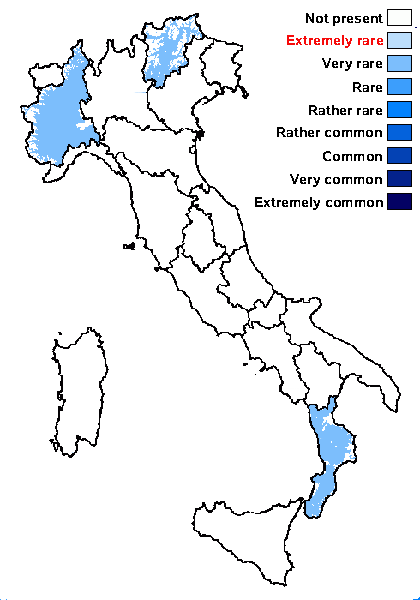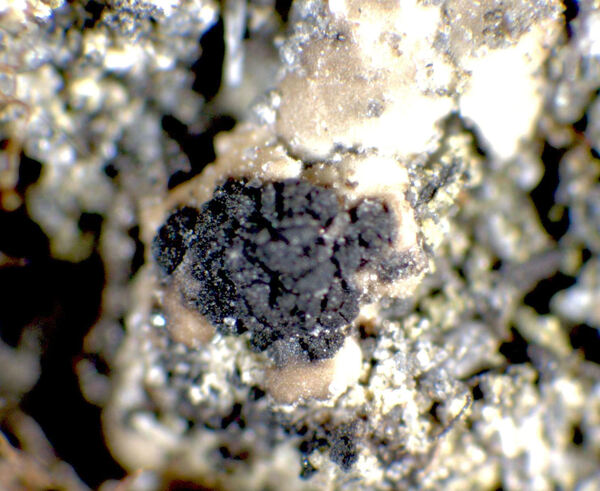Opegrapha pulvinata Rehm
in Lojka, Verh. zool.-bot. Ges. Wien, 19: 500, 1869.
Synonyms: Leciographa pulvinata (Rehm) Arnold; Trematosphaeria dermatocarponis Werner; Trematosphaeria lophiostoma Werner & M. Choisy
Distribution: N - TAA (Thor & Nascimbene 2007, Hafellner 2009, Brackel 2016), Piem (Brackel 2016). S - Cal (Puntillo 1996, Brackel 2016).
Description: Thallus inapparent, not lichenized, parasitic on the thalli of foliose or squamulose pyrenocarpous lichens. Apothecia lirelliform, black, partly immersed in the host thallus or finally adnate, 0.2-0.5 x 0.1-0.3 mm, straight or curved, with a slit-like disc, and a sometimes white-pruinose raised margin, aggregated in up to 3(-4) mm wide, dense clusters. Proper exciple black, carbonized, extending below the hymenium, K+ brownish; hymenium colourless to pale yellowish brown, 100-110 µm high, I+ persistently blue in upper part; paraphysoids branched and anastomosing, 2.5-3 µm thick, the apical cells hardly swollen; hypothecium pale brown, 12-25 µm high. Asci 8-spored, broadly club-shaped, the inner layer of endoascus amyloid in upper part, with a reduced I+ blue ring surrounding a small ocular chamber, Varia-type. Ascospores 3-septate, at first hyaline, then soon turning brown, ellipsoid to oblong-ovoid, straight, (18-)20-24(-26) x 6-8 µm, surrounded by a thick gelatinous sheath, the pigment of the overmature ones located in the wall, without dark granules in the perispore. Pycnidia black, immersed. Conidia bacilliform, straight, 5-7 x 1 µm. Photobiont absent. Spot tests: all negative. Chemistry: without lichen substances.Note: a lichenicolous fungus growing on foliose to squamulose pyrenocarpous lichens (Dermatocarpon, Catapyrenium s.lat. and Endocarpon), especially on D. miniatum, more rarely on Staurothele, probably overlooked, and somehow more frequent in Italy.
Growth form: Lichenicolous fungus
Substrata: soil, terricolous mosses, and plant debris
Reproductive strategy: mainly sexual
paras foliose or squamulose pyrenocarpous lichens
Commonnes-rarity: (info)
Alpine belt: absent
Subalpine belt: absent
Oromediterranean belt: absent
Montane belt: very rare
Submediterranean belt: very rare
Padanian area: absent
Humid submediterranean belt: very rare
Humid mediterranean belt: absent
Dry mediterranean belt: absent

Predictive model
Herbarium samples
Growth form: Lichenicolous fungus
Substrata: soil, terricolous mosses, and plant debris
Reproductive strategy: mainly sexual
paras foliose or squamulose pyrenocarpous lichens
Commonnes-rarity: (info)
Alpine belt: absent
Subalpine belt: absent
Oromediterranean belt: absent
Montane belt: very rare
Submediterranean belt: very rare
Padanian area: absent
Humid submediterranean belt: very rare
Humid mediterranean belt: absent
Dry mediterranean belt: absent

Predictive model
| Herbarium samples |
 DOLICHENS
DOLICHENS





